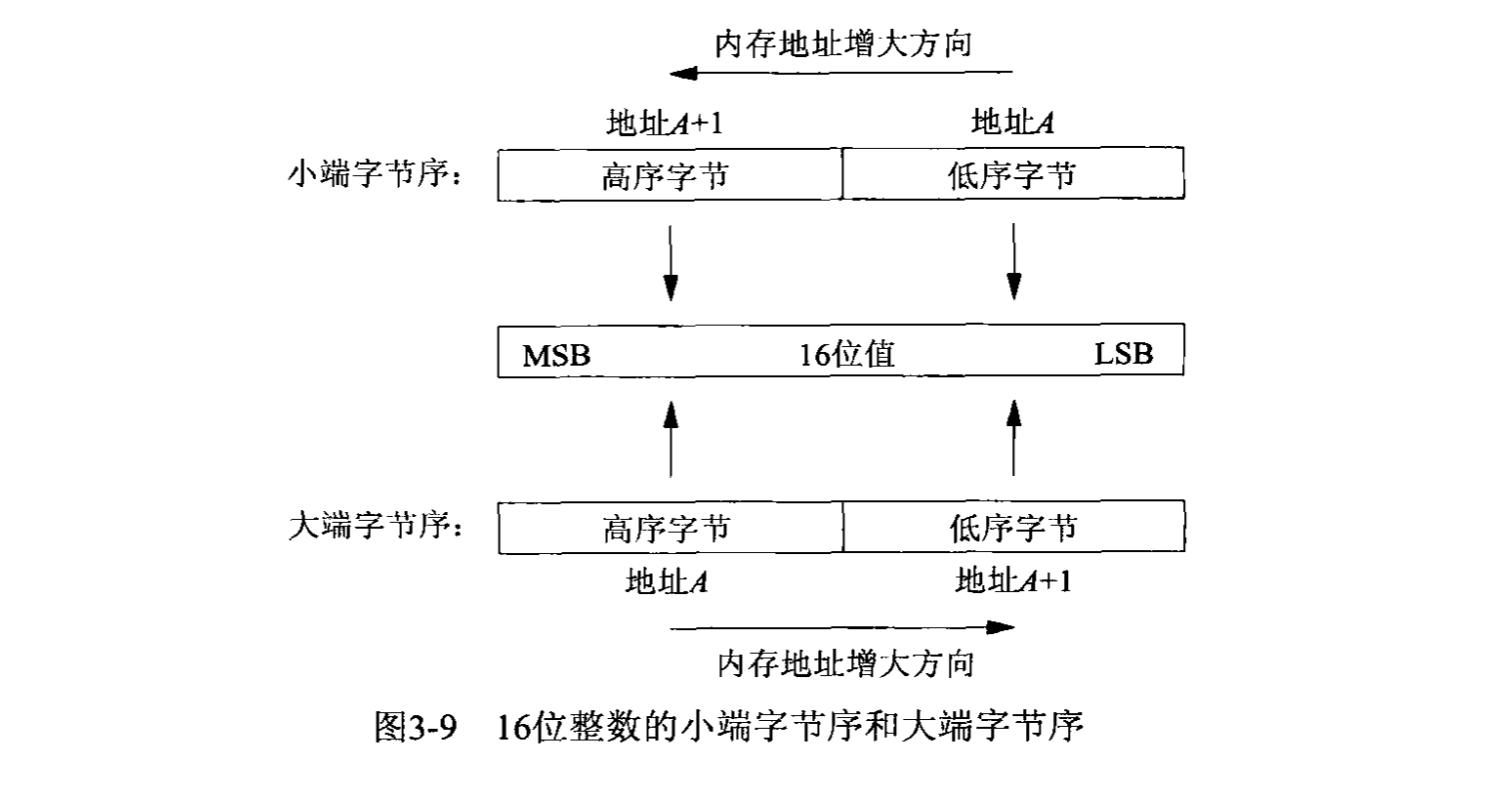梳理一下字节序的转换关系:大端字节序(big endian),小端字节序(little endian)和网络字节序。
1. 概述
-
大小端。
计算机硬件有两种储存数据的方式:大端字节序(big endian)和小端字节序(little endian)。
考虑一个 16 位整数,它由 2 个字节组成。内存中存储这两个字节有两种方法:
- 小端:将低序字节存储在起始地址;
- 大端:将高序字节存储在起始地址。
上述文字主要来源于:《UNIX 网络编程》- 3.4 字节排序函数。

-
网络字节序。
网络字节顺序是TCP/IP中规定好的一种数据表示格式,它与具体的CPU类型、操作系统等无关,从而可以保证数据在不同主机之间传输时能够被正确解释。网络字节顺序采用大端(big-endian)排序方式。
上述文字主要来源于:网络字节序。
2. 字节序关系
- 字节序转换函数。
1
2
3
4
5
6
7
8
9
#include <netinet/in.h>
/* 返回网络字节序的值。 */
uint16_t htons(uint16_t host16bitvalude);
uint32_t htonl(uint32_t host32bitvalude);
/* 返回主机字节序的值。 */
uint16_t ntohs(uint16_t net16bitvalue);
uint32_t ntohl(uint32_t net32bitvalue);
-
转换流程。
举个 🌰:client 与 server 通信,16 位整数字节序转换流程:htons –> 网络字节序(大端) –> ntohs。
其实这里面有两个环节:
- (htons)客户端主机字节序转网络字节序。
- (ntohs)网络字节序转服务器主机字节序。

我们再看看 glibc 字节序转换的源码实现,htons 和 ntohs 居然指向同一个函数。
小结:网络字节序默认是大端的,只要 主机字节序是小端的 ,在传输过程中都要进行字节序转换。
1
2
3
4
5
6
7
8
9
10
11
12
13
14
15
16
17
/*./inet/htons.c */
#undef htons
#undef ntohs
uint16_t
htons (x)
uint16_t x;
{
#if BYTE_ORDER == BIG_ENDIAN
return x;
#elif BYTE_ORDER == LITTLE_ENDIAN
return __bswap_16 (x);
#else
# error "What kind of system is this?"
#endif
}
weak_alias (htons, ntohs)
1
2
3
4
5
6
7
8
9
10
11
12
13
14
15
16
17
18
19
20
21
22
23
24
25
26
27
28
29
30
31
32
/* ./sysdeps/x86/bits/byteswap-16.h */
#ifdef __GNUC__
# if __GNUC__ >= 2
# define __bswap_16(x) \
(__extension__ \
({ register unsigned short int __v, __x = (unsigned short int) (x); \
if (__builtin_constant_p (__x)) \
__v = __bswap_constant_16 (__x); \
else \
__asm__ ("rorw $8, %w0" \
: "=r" (__v) \
: "0" (__x) \
: "cc"); \
__v; }))
# else
/* This is better than nothing. */
# define __bswap_16(x) \
(__extension__ \
({ register unsigned short int __x = (unsigned short int) (x); \
__bswap_constant_16 (__x); }))
# endif
#else
static __inline unsigned short int
__bswap_16 (unsigned short int __bsx) {
return __bswap_constant_16 (__bsx);
}
#endif
/* Swap bytes in 16 bit value. */
#define __bswap_constant_16(x) \
((unsigned short int) ((((x) >> 8) & 0xff) | (((x) & 0xff) << 8)))
3. C 语言实现大小端判断
- 判断大小端。
1
2
3
4
5
6
int little = 1;
if (*(char*)(&little) == 0) {
printf("big endian\n");
} else {
printf("little endian\n");
}
- 转小端测试 源码。
1
2
3
4
5
6
7
8
9
10
11
12
13
14
15
16
17
18
19
20
21
22
23
24
25
26
27
#include <stdio.h>
unsigned char is_little_endian() {
static int little = 1;
return (*(char*)(&little) == 1);
}
void swap(void* data, int n) {
if (is_little_endian()) return;
int i;
unsigned char *p, temp;
p = (unsigned char*)data;
for (i = 0; i < n / 2; i++) {
temp = p[i];
p[i] = p[n - 1 - i];
p[n - 1 - i] = temp;
}
}
int main(int argc, char** argv) {
int a = 0x12345678;
swap(&a, sizeof(a));
printf("a: %x\n", a);
return 0;
}
4. 参考
- 《UNIX 网络编程》

